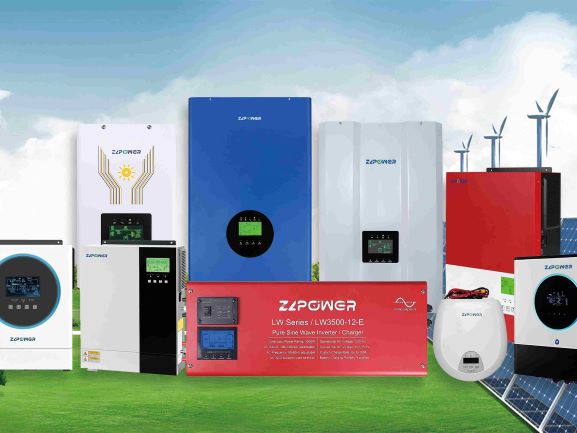

In mission-critical facilities, a reliable power backup isn’t optional — it’s the difference between smooth continuity and costly failure.
When a sudden power loss hits a data center, even a one-second gap can corrupt servers or stop an entire network. For life-safety systems like emergency lighting or fire alarms, that same outage can endanger lives. That’s why engineers often compare UPS (Uninterruptible Power Supply) and EPS (Emergency Power Supply) — two systems that sound alike but serve very different purposes. This article breaks down their key differences in design, performance, and ideal use cases to help you decide which backup truly fits your setup.
A UPS is a device that gives backup power when the main electricity cuts out. It provides steady power with no breaks. This is vital for places where even a tiny outage can lead to data loss or equipment issues.
UPS systems use double-conversion technology to supply consistent, clean power. This method, with smart controls, ensures steady voltage and frequency despite changes in input. For example, the EX6K-EX10KL high-frequency online UPS is highly adaptable and dependable. It uses advanced DSP (Digital Signal Processor) technology to improve performance. Features like instant switchover, N+X Parallel Redundancy, and clever battery management boost reliability.
UPS systems are critical in data centers to avoid downtime during power problems. The RM series high-frequency online UPS is made for servers, key network devices, and delicate equipment. It protects against voltage drops, spikes, frequency shifts, and full outages. This keeps operations running smoothly.
An EPS gives backup power in emergencies but differs from a UPS in switch time and purpose. EPS units are built for situations where short delays (usually under 15 seconds) are okay.
EPS systems are designed for simplicity and toughness. They use automatic transfer switches to start emergency circuits when main power fails. Unlike UPS units, they don’t offer instant switchover or constant voltage control. EPS units work for non-critical loads that can handle brief pauses. Their focus is on quick startup, not seamless shifts.
EPS systems are key for life safety needs like emergency lights, fire alarms, elevators, and public address systems. These need dependable backup but can tolerate short delays. The brief wait meets safety rules while keeping the system simple.
Data centers require top-notch backups because IT equipment is sensitive. The GP33 series Low-frequency Online UPS, made by ZLPOWER, is cutting-edge. It checks systems constantly. It has a clear touch-screen display. It handles sudden load changes from 0 to 100%. These features make UPS perfect for places where short outages cause big losses. EPS, however, can’t guarantee instant action or clean power during switches. This makes it unsuitable for critical IT tasks.
Life safety systems prioritize dependability over instant power. An EPS’s short delay is fine if it starts within safety limits (usually 10–15 seconds). Its simpler design and lower cost make EPS ideal for these uses. Seamless power isn’t needed, but reliable operation is a must.
Pick a UPS for places with delicate electronics needing constant power:
· Data centers
· Telecom centers
· Banks
· Hospital ICUs or operating rooms
· Factory automation lines
The EX6K-EX10KL high-frequency online UPS can be tailored to user needs. It’s great for growing IT setups. Smart RS232 communication with monitoring software lets IT managers track status in real time. This is crucial for large networks.
Choose EPS when safety rules matter more than instant power:
· Emergency lights
· Fire alarms
· Public announcement systems
· Elevators
· Staircase pressurization fans
These benefit from EPS’s budget-friendly, simple design while meeting building safety codes.
When picking between UPS and EPS, understand your specific needs. For places like data centers or hospital critical areas needing no downtime, a strong online double-conversion UPS from ZLPOWER offers great performance.
ZLPOWER is a high-tech firm focused on designing, making, and selling UPS power supplies. With products from 200VA to 800KVA, including modular designs like the 92M Series Modular Online UPS or high-frequency rack-mounted models like the RM1KVA–3KVA series, ZLPOWER provides solutions that fit your needs.
ZLPOWER sticks to the idea of “technology first, top service, customer first.” For businesses seeking uninterrupted operations with advanced technology and global certifications like ISO9001, ISO14001, and ISO45001, ZLPOWER is a reliable partner in power solutions.
Choose ZLPOWER’s advanced online double-conversion UPS systems today to safeguard your setup from unexpected outages.
A: An Online UPS provides steady, clean power using double-conversion technology. It ensures no delay during outages. This protects sensitive IT equipment from spikes, drops, or interruptions. It keeps operations running.
A: Unlike line-interactive or offline UPS systems, an Online UPS constantly converts AC to DC and back to AC. This gives stable output. It’s ideal for data centers where brief power issues can cause problems.
A: An Online UPS can power life safety systems reliably. But its instant switchover and higher cost may be too much for uses like emergency lights or fire alarms. EPS systems meet safety rules with acceptable short delays.